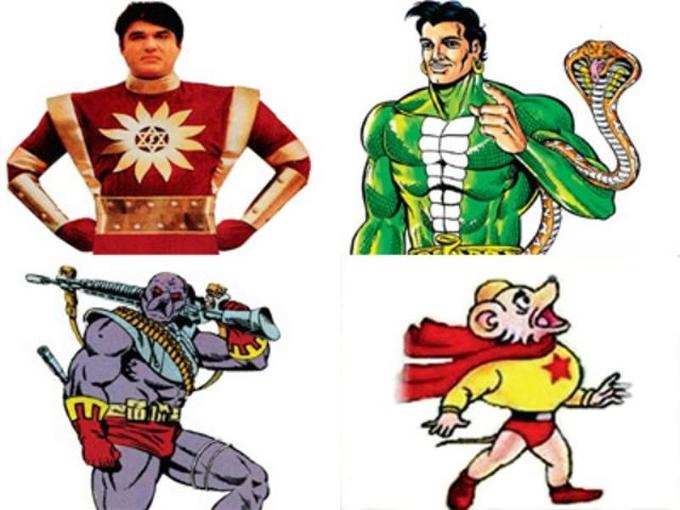
While the west was gobbling up names like
But then what changed? There has to be a reason why there are so few young readers today. Most comic book slash graphic novels in India nowadays, target the 25 to 35 age group, which is a little uncommon when you compare it with the target audiences in Europe and America. One reason for this readership decline could be the advent of cable television and video games. Mainstream cable channels in India entered homes in the early to mid nineties, just when the comic book industry had reached its peak. And so did computer gaming. Suddenly, most children from middle class Indian families could (or in most cases, had to) make choices. This created a very unique dilemma for the comic book publishers in India. Their loyal readers were growing up and the next generation of children were simply not starving for
Liquid Comics, which was known as Virgin Comics back when it was launched in 2006, made some serious efforts to turn the Indian readers towards a grittier, serious and darker path of entertainment through its Shakti series. The core essence of the titles was to make the content appealing to a wider and more international audience while still retaining the series' Indianness. It had characters such as Devi (a modern day reincarnation of a goddess) and The Sadhu (a colonial period piece about an Englishman who was a reincarnated version of a warrior sage from the past). The themes dealt with subjects like reincarnation, spirituality and highly developed individual characterisation (think Neil Gaiman's Sandman). These were clearly not aimed at children, but at late teens and adults.
There is also Holy Cow Entertainment which refurbished the story of Ramayana through the perspective of the much misunderstood Ravan. The ten-part comic series, called Ravanayan, is written by Vijayendra Mohanty from Delhi and illustrated by Mumbai-based Vivek Goel. What makes this story unique is its creativity to steer away from the traditional 'good against evil' formula. The reader is made to empathise with Ravana, a demon king, who is the main antagonist in Valmiki's original Ramayana, and they are told why he made the choices he did. This is something really progressive in India, where any alternative view to the traditional narrative has mostly been condemned by religious fundamentalists.
Comics have usually been a gateway drug to the addictiveness that is reading, and its decline is hence more worrying. Somewhere after the nineties, when the age of Cartoon Network dawned upon India, the number of young readers spiralled down. There's also the changing face of parents today. Children in the 80's and 90's had parents and grandparents who told them stories of epics such as Ramayana, Mahabharata, etc. not today. This is where comic books can make a great impact for young readers. Titles like Chacha Chaudhary and Shaktimaan dropped the ball by being too preachy. That is something kids today can easily see through. The key to breaking through to them lies in original content and storytelling. Maybe Indian publishers can develop apps that let young readers read online versions of comic books on their mobile devices. Indian comic books have a lot to offer, but they should try harder to adapt to new technology to deliver.